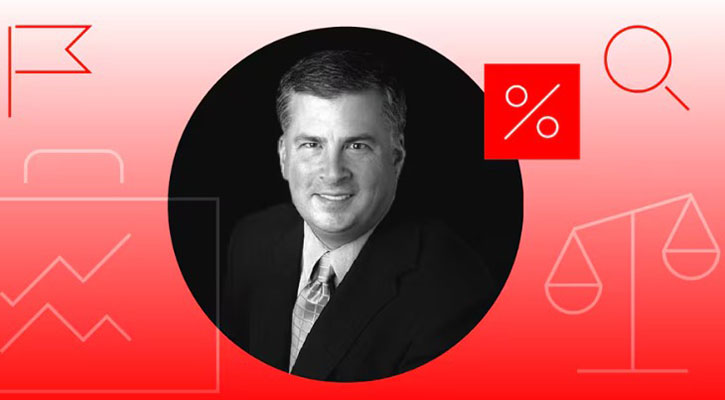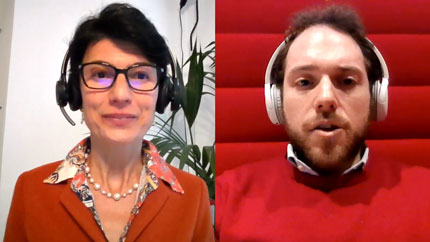If you've looked at fund performance rankings lately, you’ve likely noticed that the top of the charts is dominated by funds focusing on narrow areas such as Latin America and energy. Apparently, many investors view this as a signal to buy: Fidelity Funds Network recently put out a press release noting that funds in the IMA Specialist Sector (the IMA sector into which most of these offerings fall) ranked number one in ISA sales on Fidelity Funds Network from Jan. 1 through Feb. 28 2006. In all, Fidelity says the sector attracted 86% more money on its Funds Network than it did during the same period in 2005.
It's human nature to want to participate in the latest hot area of the market--no one wants to feel like they're missing out on the "easy money." Nonetheless, investing based on past performance is all too often a recipe for disaster. Just such a scenario unfolded in the late 1990s: Money poured into technology and growth funds as they soared in 1999, and those investors ended up losing gobs of money when the correction hit in early 2000. In contrast, investors who maintained exposure to small-cap value funds--one of the worst performing areas of the late 1990s—fared much better during the correction.
Investor behaviour costlyIn mid-2005, my colleague Russ Kinnel, Morningstar's Director of Fund Research in the U.S., took a more systematic look at how investors' behaviour affected the returns they received, and the results were revealing to say the least: He found that the typical fund investor in all domestic U.S. fund categories routinely earned significantly less than the stated return of a fund, due to poor decisions about when to buy or sell.
The Morningstar U.S. study compared the official annualised 10-year total return of the average fund in each category to its dollar-weighted return. The latter is a figure that takes the impact of investor buy and sell decisions into account by weighting a fund's returns by estimated monthly cash flows in and out of the fund. The resulting number is an estimate of the return earned by the typical investor in the fund during the entire period, taking into account the timing of their buy/sell decisions.
| U.S. Fund Dollar-Weighted Returns by Category | |||
|
Morningstar U.S. Category |
Dollar-Weighted |
Official |
Gap (%) |
| Large Value |
9.60 |
10.02 |
-0.42 |
| Large Blend |
7.46 |
9.05 |
-1.59 |
| Large Growth |
4.35 |
7.76 |
-3.41 |
| Mid Value |
10.43 |
12.16 |
-1.73 |
| Mid Blend |
10.59 |
11.41 |
-0.82 |
| Mid Growth |
6.32 |
8.84 |
-2.52 |
| Small Value |
11.64 |
13.63 |
-1.99 |
| Small Blend |
8.95 |
11.32 |
-2.37 |
| Small Growth |
5.35 |
8.41 |
-3.06 |
| Conservative Allocation |
7.21 |
7.46 |
-0.25 |
| Moderate Allocation |
7.27 |
8.43 |
-1.16 |
| Communications |
3.00 |
8.37 |
-5.37 |
| Financials |
12.81 |
14.36 |
-1.55 |
| Health |
8.54 |
12.49 |
-3.95 |
| Natural Resources |
10.31 |
12.37 |
-2.06 |
| Real Estate |
13.43 |
15.40 |
-1.97 |
| Technology |
-5.67 |
7.68 |
-13.35 |
| Data as of April 30, 2005 | |||
The data in the above table suggest strongly that, far from adding value with their trades, U.S. investors harmed their returns by buying and selling funds at inopportune times. Funds that invested in volatile growth stocks tended to have the largest negative gaps between their official returns and their dollar-weighted returns. For the technology category, the worst of the lot in this regard, the typical investor earned an annualised return that was 13.35 percentage points below the average stated return—an enormous margin by any standard.
It’s not surprising that volatile funds would display large negative gaps. When such investments run up sharply, they appear particularly enticing to investors looking at their past performance, but they can also quickly crash, costing those investors considerable performance. The situation was exacerbated by the technology bubble and crash of the late 1990s, and the rush by fund companies to sell investors technology laden funds at the height of the “irrational exuberance”.
What should investors do?The study strongly suggests investors would do well to devise a diversified investment program that meets their long-term needs and risk tolerance and stick to it. Above all, it’s clear that one should avoid the temptation to load up on whatever seems to be working at the moment simply because it’s working. All too often, you'll have already missed the upside and may well get burned by an ensuing downturn. Moreover, you'll also incur trading costs that can significantly erode your returns. If you can’t quite give up on the idea, at least keep such moves small relative to your overall account size.





























